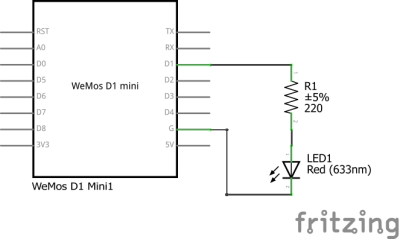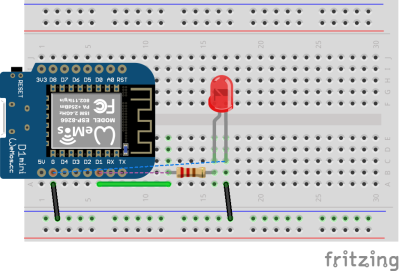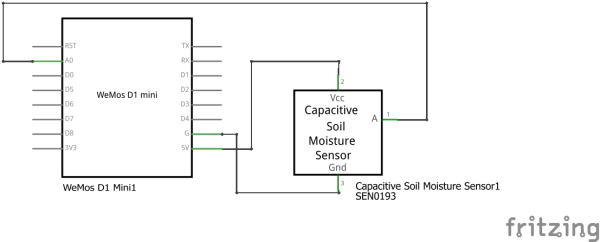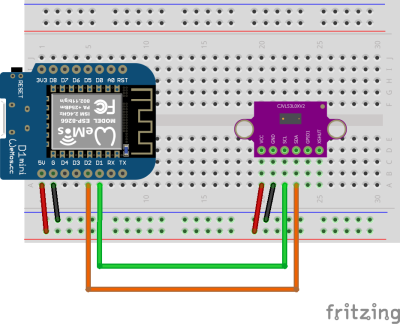This is an old revision of the document!
Table of Contents
Sensors and Communication
Welcome to Day 2 of our IoT Workshop! Today, we'll take a closer look at sensors, the backbone of IoT data collection. You'll gain insights into how sensors operate and discover key protocols like Analog, OneWire, and I2C that facilitate communication between devices and sensors. This foundational knowledge will empower you to effectively utilize sensors in your IoT projects.
1. Output - PWM
Now, we're stepping into the practical aspect of our workshop, focusing on Pulse Width Modulation (PWM) output with the ESP8266. PWM isn't just about adjusting the brightness of an LED; it's a versatile method of communication. Through this segment, you'll grasp how PWM operates as a form of control, allowing us to transmit information using varying pulse widths. This will come to life as we demonstrate PWM in action, using an attached LED as an illustrative example.
 Fig. 1: ESP8266 with LED - Schematic
Fig. 1: ESP8266 with LED - Schematic
 Fig. 2: ESP8266 with LED - Breadboard
Fig. 2: ESP8266 with LED - Breadboard



